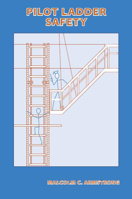This publication begins with a brief history of pilotage and pilot liability. It then provides detail on practical aspects of pilotage, such as the Master/Pilot exchange, pilot transfer, ship handling, fatigue management and training and certification. Legal considerations, such as civil liability and exemptions, highlight pilot responsibility for ship damages. Photographs, AIS screenshots and illustrations support the more practical sections on conducting pilotage.
Within this book you will find articles that look forward to the harnessing and use of technology for ever larger and more complex ship types and tasks. This is as it should be, for the maritime industry is progressive. However, pilots must continue to employ traditional skills, keeping mindful of the need to look out of the bridge window while adding the use of marine technologies to their skill set.
The publication contains a large number of articles from pilots all over the world. This is reflected by American articles being written in American English and other articles, in UK English.
1.1 International Maritime Organization (IMO)
1.2 National Instruments
1.3 Liability and Criminalisation
1.4 Immunity and Exemptions
2. Conducting Pilotage
2.1 Planning – Pilot’s Passage Plan
2.2 Master/Pilot Exchange (MPX)
2.3 Communications and SMNV
2.4 Underkeel Clearance (UKC)
2.5 Winter Pilotage
2.6a Canal Pilotage – Panama Canal
2.6b Canal Pilotage – Kiel Canal
2.7 River Pilotage
2.8 Deep Sea Pilotage
2.9 Straits Pilotage
3. Ship Handling
3.1 Propulsion, Steering and Power
3.2 Ship Blackouts, Shaft Generators and Controllable Pitch Propellers
3.3 Navigation Technology and Equipment
3.4 High Sided Vessels
3.5 Azimuthing Control Devices
3.6 Squat
3.7 Interaction
3.8 Tug Use
3.9 Sailing Vessels
3.10 Handling Unusual Vessels
3.11 Warships
3.12 Fast Craft
4. Requirements, Training and Certification
4.1 Overview
4.2a Entry Routes to the Profession – France
4.2b Entry Routes to the Profession – USA
4.3 Continuous Professional Development
4.4 Mentoring Training
4.5 Use of Simulators
4.6 Scaled Manned Models
4.7 Bridge Resource Management for Pilots
5. Human Element – Fatigue
5.1 Fatigue Management
6. Transfers
6.1 Ladder Safety
6.2a Pilot Boat Evolution
6.2b Pilot Vessel Types
6.3 Helicopter Use
7 IMPA Strategy





























